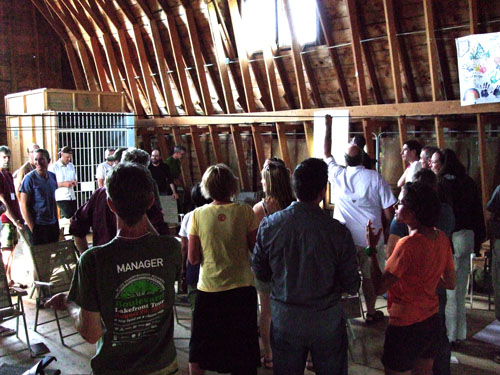Alliance for Biking & Walking – Executive Leadership Retreat
By Alison Graves, Executive Director of Community Cycling Center
 Early last week I attended the Thunderhead Retreat II organized by the Alliance for Biking & Walking. There were a total of about 40 leaders in attendance, including staff from Recycle-a-Bicycle (RAB) in New York and Los Angeles County Bicycle Coalition — organizations we admire for excellent work empowering youth and communities of color.
Early last week I attended the Thunderhead Retreat II organized by the Alliance for Biking & Walking. There were a total of about 40 leaders in attendance, including staff from Recycle-a-Bicycle (RAB) in New York and Los Angeles County Bicycle Coalition — organizations we admire for excellent work empowering youth and communities of color.
RAB’s Executive Director, Pasqualina Azzarello, noted how the Community Cycling Center’s work has been an inspiration. The feeling is mutual. One of the best outcomes of the retreat was connecting with Pasqualina and planning with her ways to connect organizations like ours to the movement.
“When I saw your Understanding Barriers to Bicycling presentation at the National Bike Summit in 2009,” said Pasqualina, “it made a huge impact on me and on the youth who attended with me. It has influenced us at RAB since then.”
Fifteen years ago, a group of people congregated at the Thunderhead Ranch in western Wyoming for a retreat to imagine the future of the bicycle movement. At the time, there were only a handful of state and local groups with paid staff, and the League itself had limited capacity nationally and even more limited means to assist at the state and local level. Over the course of the following year, the Alliance for Biking & Walking was born.
Early last week, we joined together to re-imagine the next phase of our shared future. While it’s a long way to the Thunderhead Ranch, the beautiful and remote setting seems to offer the space it takes to reflect, listen, and grow.
Discussions included: Taking Stock of the Movement-Exploring What’s Worked, Alliances With Other Interest Groups, Consolidation/Cooperation of National Groups, and What Is Needed Moving Forward. A number of common themes emerged: mixed messages and branding; lack of diversity; communications and support to and from local, state, and national groups; updating national goals; and ideas on how bicycling and walking can become more mainstream.
We had a very rich conversation about how to engage new audiences. There was wide recognition that for bikes to become mainstream, we are not as inclusive or diverse as we need to be. Ideas on how to change this ranged from creating mentoring programs, to engaging community-based organizations, to considering new messages, and working to diversify our organizations.
One of the most exciting outcomes for me and the Community Cycling Center was being recognized for the great work we’ve done to broaden the movement. A possible next step is to develop a national network of community-based organizations that work effectively to develop a new generation of leaders and new communities of people who ride. We’re very excited to see the outcomes of this retreat, both in our own organization and nationally, in the years ahead.